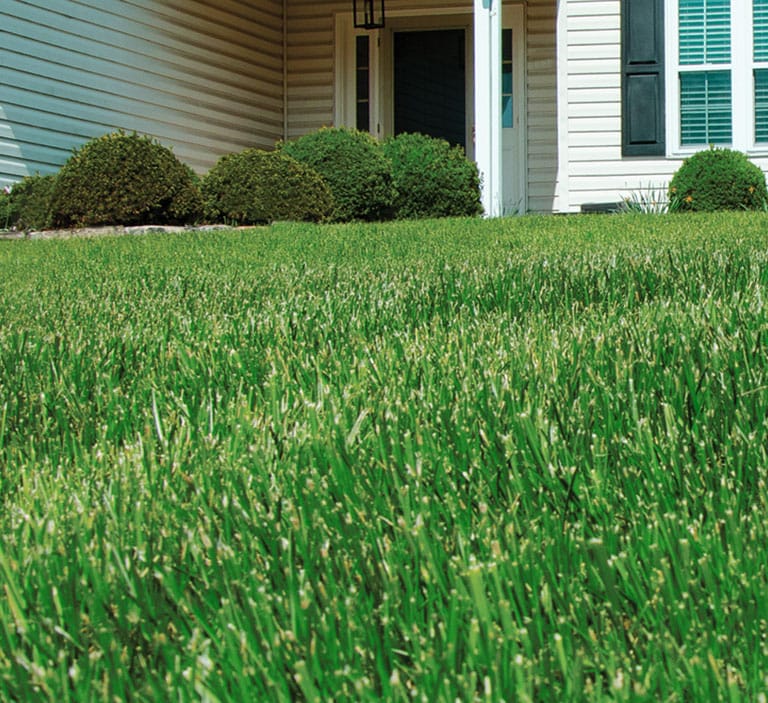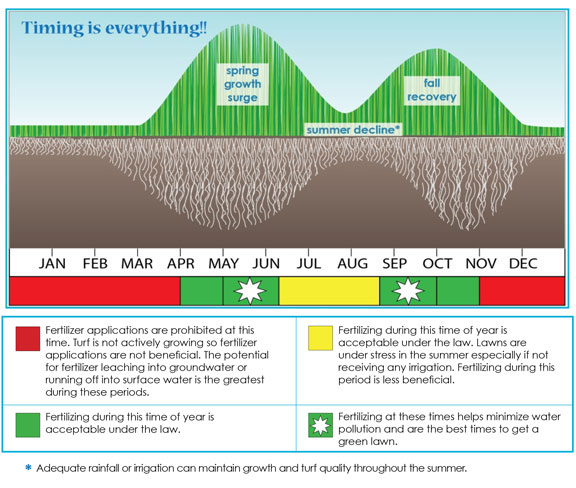A healthy lawn needs love and care. Fertilizing at the right time is key. But when is the best time to fertilize your lawn? This article will help you find out.

Credit: emoyer.com
Why Fertilize Your Lawn?
Fertilizing your lawn is essential. It gives the grass the nutrients it needs. These nutrients help the grass grow green and strong. A well-fertilized lawn also fights weeds better.
What Nutrients Does Grass Need?
Grass needs three main nutrients:
- Nitrogen (N): Helps the grass grow fast and green.
- Phosphorus (P): Helps the roots grow strong.
- Potassium (K): Helps the grass stay healthy and fight diseases.
These nutrients are often called NPK. You can see these letters on fertilizer bags.
Best Time to Fertilize Your Lawn
The best time to fertilize depends on the type of grass. There are two main types: cool-season grass and warm-season grass.
Cool-season Grass
Cool-season grass grows best in cool weather. Examples are Kentucky bluegrass, fescue, and ryegrass. The best times to fertilize cool-season grass are:
- Early Spring: Fertilize when the grass starts to grow. This is usually in March or April.
- Late Spring: Fertilize again in May or June. This helps the grass get ready for summer.
- Early Fall: Fertilize in September. This helps the grass recover from summer heat.
- Late Fall: Fertilize in November. This helps the grass store nutrients for winter.
Warm-season Grass
Warm-season grass grows best in warm weather. Examples are Bermuda grass, St. Augustine, and Zoysia. The best times to fertilize warm-season grass are:
- Late Spring: Fertilize when the grass starts to grow. This is usually in April or May.
- Early Summer: Fertilize again in June or July. This helps the grass stay strong during the hot summer.
- Late Summer: Fertilize in August. This helps the grass prepare for fall.
Tips for Fertilizing Your Lawn
Here are some tips to make sure you fertilize your lawn the right way:
Use The Right Amount
Too much fertilizer can harm your lawn. Follow the instructions on the fertilizer bag. This will tell you how much to use.
Water Your Lawn
After you fertilize, water your lawn. This helps the fertilizer get into the soil. It also prevents the grass from burning.
Use The Right Type Of Fertilizer
There are different types of fertilizer. Some release nutrients quickly. Others release them slowly. Choose the right type for your lawn’s needs.
Avoid Fertilizing Before Rain
If it rains right after you fertilize, the nutrients can wash away. Check the weather before you fertilize.
Don’t Fertilize In The Heat
Fertilizing when it’s very hot can stress your grass. It’s better to fertilize in cooler weather.
Use A Spreader
A spreader helps you apply the fertilizer evenly. This helps prevent patches of too much or too little fertilizer.

Credit: healthylawns.suffolkcountyny.gov
Frequently Asked Questions
When Should I Fertilize My Lawn?
Early spring or fall are ideal for lawn fertilizing. These seasons promote optimal grass growth.
How Often To Fertilize A Lawn?
Fertilize your lawn twice a year. Spring and fall applications ensure healthy, lush grass.
What Type Of Fertilizer Is Best?
Use a slow-release granular fertilizer. It provides nutrients over time, promoting steady growth.
Should I Water Before Fertilizing?
Yes, water your lawn a day before. This helps prevent fertilizer burn and ensures even nutrient distribution.
Conclusion
Fertilizing your lawn at the right time is key. It helps your grass grow green and strong. Remember to fertilize cool-season grass in early spring, late spring, early fall, and late fall. For warm-season grass, fertilize in late spring, early summer, and late summer. Follow the tips in this article to keep your lawn healthy and beautiful all year round.
Additional Resources
For more information on lawn care, check out these resources:
